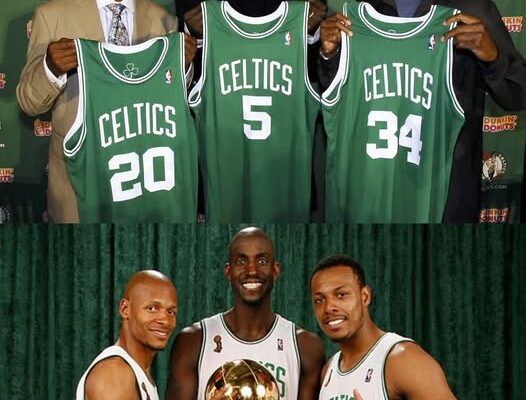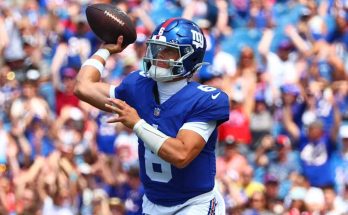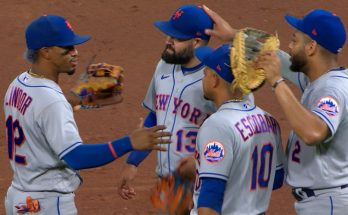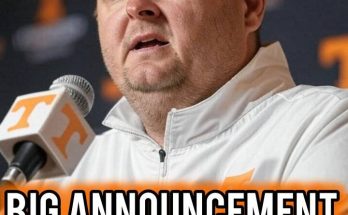The transformation of the Boston Celtics from league cellar-dwellers into champions began with an audacious move on July 31, 2007, when Boston—having won just 24 games the previous season—completed the single largest trade in NBA history by sending five players (Al Jefferson, Ryan Gomes, Gerald Green, Theo Ratliff, Sebastian Telfair), two first-round draft picks, and cash considerations to the Minnesota Timberwolves in exchange for 31-year-old Kevin Garnett, a ten-time All-Star, 2004 MVP, and perennial Defensive First-Team honoree. Garnett had spent 12 seasons with Minnesota—amassing well over 19,000 points, 10,000 rebounds, and 4,000 assists, ranking among legends such as Chamberlain, Abdul-Jabbar, and Barkley. Upon the trade announcement, Garnett promptly signed a three-year extension reportedly worth approximately \$60 million, a gesture many said amounted to a discount that smoothed the financial path for Boston’s turnaround ambitions.
Just a month earlier, the Celtics had executed another bold deal—trading their No. 5 draft pick, Wally Szczerbiak, and Delonte West to the Seattle SuperSonics in exchange for sharpshooter Ray Allen. With Allen now in place alongside long-time All-Star Paul Pierce, and the newly acquired Garnett joining the fold, Boston’s new “Big Three” was complete—players in their prime, each championship-caliber, and together transforming the franchise’s identity.
The immediate results were breathtaking. The summer of 2007 concluded with Celtics President of Basketball Operations Danny Ainge receiving widespread praise; he was later named NBA Executive of the Year for his bold vision and execution. In the 2007-08 regular season, Boston compiled a league-best 66-16 record—a dramatic improvement of 42 wins over the prior year, marking one of the greatest single-season turnarounds in NBA history.
Garnett’s presence lifted the team in countless ways. On defense, he was dominant, anchoring the Celtics as he finally earned Defensive Player of the Year—the first Celtic ever to claim the award. Pierce continued to produce as a dynamic scorer and team leader. Allen provided deadly perimeter shooting. Veteran guard Rajon Rondo emerged as a breakout star, while Kendrick Perkins offered bruising interior defense. Role players filled in admirably, and the team’s chemistry—remarkable for a roster assembled hastily—was a key ingredient in their rise.
In the playoffs, Boston navigated back-to-back Game 7s—first defeating the Hawks, then the Cavaliers—to reach the Eastern Conference Finals, where they dispatched the reigning Eastern Conference champion Detroit Pistons in six games. In the NBA Finals, they faced a familiar rival: Kobe Bryant and the Lakers. Boston closed out the series with a crushing Game 6 blowout, and Garnett’s 26 points, 14 rebounds, and relentless intensity helped clinch Boston’s 17th championship, their first since 1986. After the final buzzer, Garnett’s celebrated cry of “Anything is possible!” became emblematic of a franchise reborn.
The Big Three era—spanning roughly 2007 through 2012—gave Boston sustained success. Garnett made All-Star teams, All-NBA, and All-Defensive honors multiple times; the Celtics returned to the Finals in 2010, narrowly losing to the Lakers in seven games. While Boston never captured a second title in that span, they remained perennial Eastern Conference contenders, consistently landing among the league’s elite heading into the early 2010s.
The scale and ambition behind the Garnett trade led many to credit it as the genesis of the modern NBA superteam era—pre-dating LeBron’s Miami Heat, Durant’s Warriors, and others. ClutchPoints argued that Garnett helped usher in player empowerment and reshaped how stars influence team building, inspiring future alliances such as LeBron-Wade-Bosh and Curry-Thompson-Green-Durant. Indeed, some have remarked that LeBron’s decision to join the Heat was partially influenced by facing Boston’s Big Three in the playoffs.
Garnett’s arrival also resonated organizationally. Celtics owner Wyc Grousbeck later reflected, “Everything changed the day Kevin arrived in Boston,” and praised him not only as a competitor but a teammate whose presence transformed the franchise’s identity and pride. In retrospect, Boston media and fans have lauded the trade as one of Danny Ainge’s greatest coups—one writer even characterizing it as an Auerbach-sized heist that restored “Celtics Pride” after two decades of disappointment.
Through Garnett’s six seasons in Boston, the Celtics continued to contend—he remained a defensive anchor and emotional leader, never demanding the spotlight but delivering when it mattered most. Pierce continued to flourish offensively, though Allen’s relationships with teammates became strained over time, culminating in some lasting rifts—especially with Garnett and Rondo, as noted in later retrospectives reflecting on the Big Four’s internal tensions despite their success.
Nearly 18 years ago—on July 31, 2007—the Celtics completed the trade that changed everything. It created a true Big Three: Pierce, Allen, and Garnett, all All-Stars in their primes. Garnett’s arrival sparked the franchise’s return to relevance, delivering Boston its long-awaited 17th NBA championship in 2008 and setting a new template for building powerhouse teams. Danny Ainge’s willingness to bet the house paid off spectacularly. The trade not only reshaped the Celtics, it shifted the direction of the NBA itself, helping usher in an era of superstar alliances and player-driven team building.
Looking back with nearly two decades of hindsight, it’s clear that the genius of that deal wasn’t just the players acquired, but the cultural change Garnett brought. A Celtics team that had sputtered for years suddenly embodied defensive toughness, unselfishness, and belief. Garnett’s intensity, leadership, and defensive excellence elevated both his teammates and the organization. In tandem with Pierce and Allen, they formed a trio that meshed beautifully—Pierce the clutch scorer, Allen the deadly shooter, Garnett the defensive anchor, and emotional spark plug. Together, they embodied what a modern championship core looked like.
Although the Big Three era faded by the early 2010s—Allen departed, injuries mounted, and Garnett and Pierce were eventually dealt in the infamous 2013 Nets trade that ultimately netted the Celtics future stars Jayson Tatum and Jaylen Brown—the legacy remained. They’d restored the Celtics to championship status, re-energized a storied franchise, and left a lasting blueprint: bold trades, star synergy, defensive identity, and unwavering intensity.
So yes: eighteen years ago, Boston acquired Kevin Garnett. The Big Three of Pierce, Allen, and Garnett was born. The immediate impact was breathtaking: a record of 66-16, a championship, and the spotlight returned to the parquet. The longer legacy was structural: the dawn of superteams, the assertion of player agency in shaping rosters, and the rejuvenation of one of the NBA’s most hallowed franchises. That summer changed Boston’s fortunes and, to many, changed the NBA forever.



